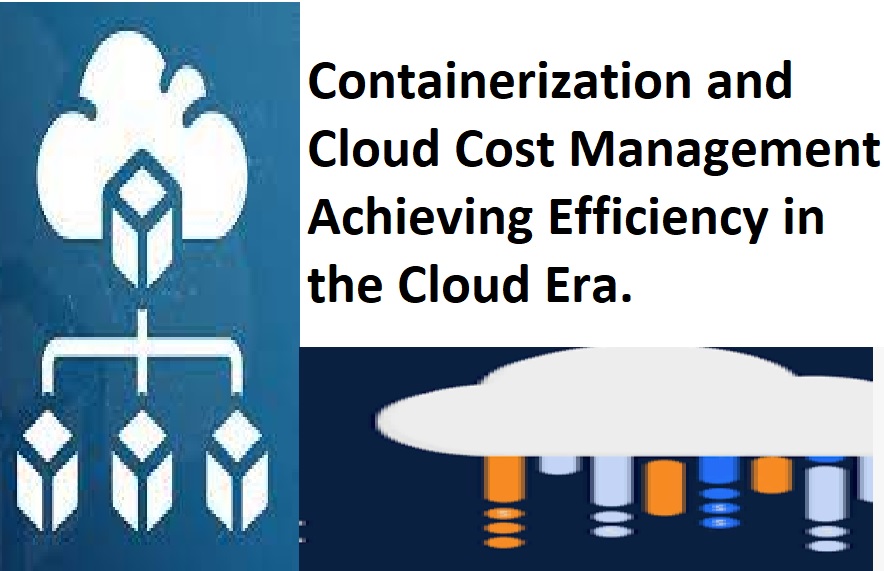Containerization and cloud computing have revolutionized the way businesses operate, enabling them to scale their applications and services with unprecedented ease and flexibility. However, with the immense power and convenience of the cloud comes the challenge of managing costs effectively. This article explores the synergy between containerization and cloud cost management, illustrating how these two technologies can work in tandem to optimize resource utilization, reduce operational expenses, and enhance overall efficiency in the cloud era.
I. Understanding Containerization
- What is Containerization?
Containerization is a lightweight form of virtualization that allows applications and their dependencies to be packaged together into isolated containers. These containers run consistently across different environments, from development to production, providing a standardized and portable environment for software. Docker and Kubernetes are among the most popular containerization tools, allowing developers to build, deploy, and manage containers effortlessly.
- Key Benefits of Containerization
a. Portability: Containers encapsulate applications and their dependencies, making them easy to move between different cloud providers or on-premises infrastructure.
b. Resource Efficiency: Containers share the host OS kernel, reducing overhead and enabling more efficient resource utilization compared to traditional virtual machines.
c. Scalability: Containers can be rapidly scaled up or down to accommodate varying workloads, ensuring optimal resource allocation.
d. Consistency: Containers guarantee consistent runtime environments across development, testing, and production stages.
II. The Cloud Cost Challenge
- The Cloud Cost Model
a. Pay-as-You-Go: Cloud services are typically billed on a pay-as-you-go basis, where users pay only for the resources they consume.
b. Hidden Costs: While this model offers cost flexibility, it can lead to unexpected expenses due to underutilized resources, data transfer fees, and unoptimized configurations.
- Common Cloud Cost Management Challenges
a. Overspending: Users often provision more resources than necessary, leading to overspending.
b. Lack of Visibility: Limited visibility into cloud spending across the organization can hinder effective cost control.
c. Complex Pricing Models: Complex pricing structures and frequent changes make it challenging to forecast and manage costs accurately.
III. Synergy Between Containerization and Cloud Cost Management
- Resource Optimization
a. Right-Sizing: Containers can be finely tuned to match application resource requirements, preventing over-provisioning and reducing costs.
b. Auto-scaling: Container orchestration platforms like Kubernetes can automatically adjust the number of containers based on traffic, optimizing resource utilization.
- Improved Visibility
a. Monitoring Tools: Container orchestration tools provide robust monitoring and logging capabilities, offering insights into resource consumption.
b. Cost Allocation: With containerization, it’s easier to allocate costs to specific projects or teams, enhancing accountability.
- Cost-Efficient Development and Testing
a. DevOps Workflow: Containers facilitate DevOps practices, enabling faster development cycles and reducing labor costs.
b. Isolated Testing: Containers provide isolated testing environments, preventing resource conflicts and minimizing testing-related costs.
IV. Best Practices for Containerization and Cloud Cost Management
- Implement Cost Allocation Tags: Use cloud provider-specific tags to allocate costs to projects, departments, or teams, making it easier to track and optimize spending.
- Continuous Monitoring: Regularly monitor resource utilization, identifying idle resources or over-provisioned containers that can be downsized or terminated.
- Auto-scaling Policies: Configure auto-scaling policies to dynamically adjust container instances based on workload, preventing underutilization.
- Right-Sizing Containers: Continuously assess container resource requirements to ensure they match the application’s needs.
- Cost Optimization Tools: Leverage cloud provider cost optimization tools and third-party solutions to analyze spending patterns and recommend cost-saving measures.
Conclusion
Containerization and cloud cost management are complementary strategies that can help organizations harness the full potential of the cloud while controlling expenses. By adopting containerization practices and implementing sound cost management strategies, businesses can strike a balance between innovation and cost control in the cloud era. As the cloud landscape continues to evolve, staying vigilant and adaptable is key to achieving long-term efficiency and cost savings.
